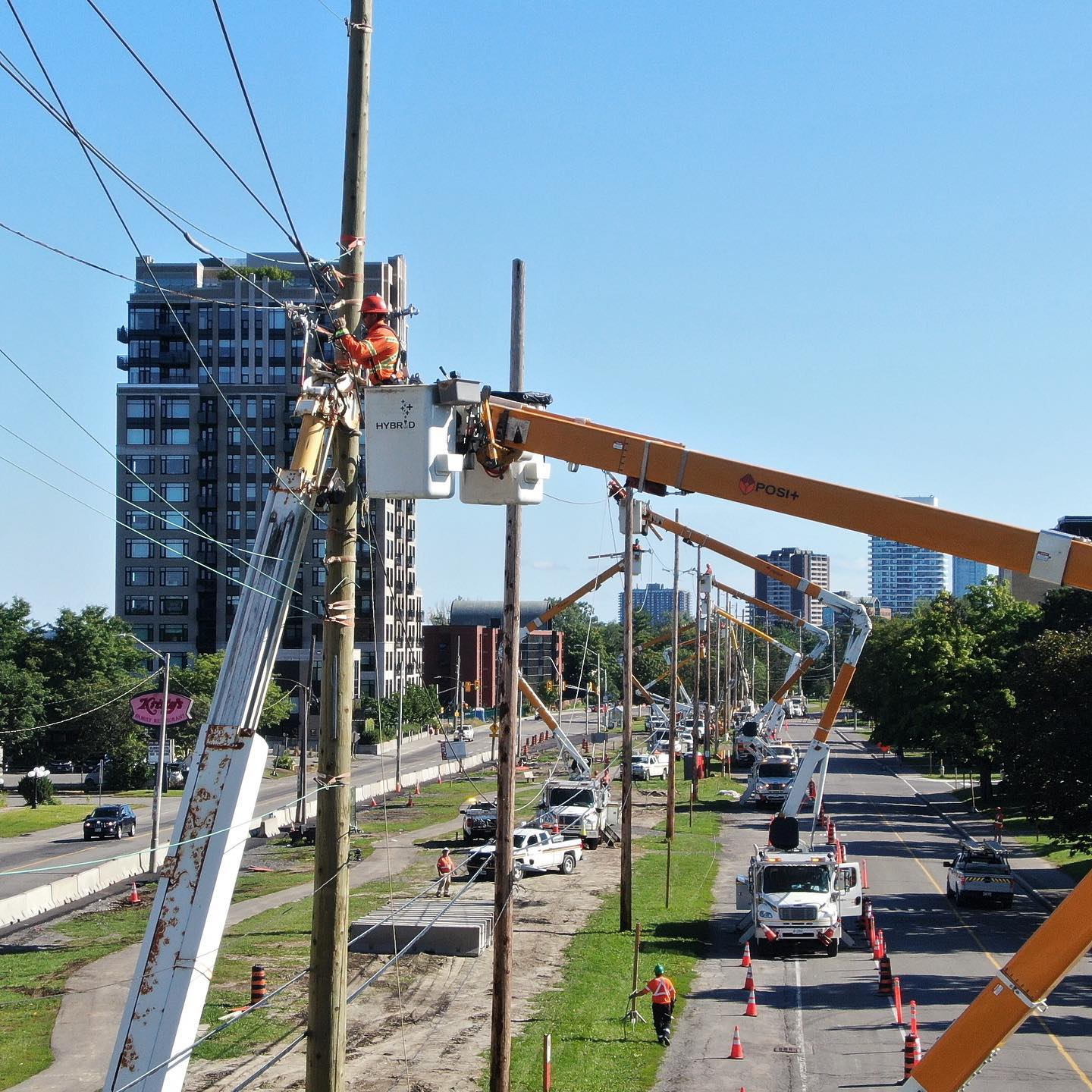Hydro poles - they’re all around us in the city. They are such a common motif that they almost blend into the background of our purview, rarely evoking much thought. But, once they do, the questions start flooding in.
That’s why it wasn’t too long ago that we shared some fun facts about our hydro poles. Not surprisingly, that article (part 1) ignited your curious minds and we received many more questions on the subject. Today, we’re here to provide you with even more information on our elusive poles, from information on the lifespans of composite versus wood, to how deep they are planted.
Composite poles: pros and cons
In part 1, we mentioned that we have both wooden and composite hydro poles. We listed all sorts of benefits for composite poles, including that they can last up to twice as long (approximately 80 years). They also have a high strength-to-weight ratio, meaning they can be used in areas that may not be able to support a wooden pole (wet soils, ditches, swampy areas, or other structurally sensitive areas), and they are resistant to both rot and woodpecker damage. Moreover, our composite poles are manufactured in Ontario. This begs the question: why don’t we use composite poles exclusively then? The answer: it comes down to cost. Based on ongoing life cycle analysis performed at Hydro Ottawa, the estimated lifetime cost of using composite poles remains marginally higher than that of wood poles (with the exception of cases where deterioration would be accelerated from either rot or woodpeckers). To help limit infrastructure expenses when possible, the majority of the poles we install today are still made of wood - in fact, less than one per cent of installed Hydro Ottawa-owned poles are composite.
About those wooden poles
The majority of Hydro Ottawa’s wooden pole supply - mainly cedar and pine - comes from western Canada. Because the trees that they are sourced from aren’t all the same size, the poles vary in size too. Hydro Ottawa’s wooden poles tend to range in height from 45 to 85 feet. While they may seem inferior to composite poles, they are actually prized throughout North America for their balanced characteristics in durability, longevity and cost-effectiveness. In spite of being more vulnerable to the elements over time, they can be sourced quite rapidly and inherently possess qualities that make them ideal for electrical infrastructure (ex: low thermal expansion coefficient and a low conductivity rating). Another added benefit is that when it comes time for wooden poles to be replaced (after an average of 40 years), a high percentage of them are able to be recycled. Should a pole be removed before its lifecycle is up, it may be reused depending on its condition.
How they’re installed
Whether they are made of wood or composite, hydro poles are buried at a depth that’s 10 per cent of their total height plus two feet to ensure optimal stability. Wooden poles can be a little more precarious to install since they are one long piece - unlike composite poles which are installed in sections.
Feats of strength... with cars
We had some customers ask if one type of pole was stronger than the other when it comes to vehicle collisions. In short, the answer is no. However, one benefit to composite poles under these circumstances is that they are designed and installed in sections, so crews can just replace the section that’s damaged instead of having to replace an entire hydro pole.
Overhead infrastructure vs. underground
Another common question we received is, why don't we just bury all electrical lines? While overhead power lines and poles do require quite a bit of ongoing maintenance due to their exposure to the elements, underground cabling is significantly more expensive to install and maintain. The need to excavate is costly and is often only feasible in new developments. Likewise, underground cabling still has its drawbacks in that it is susceptible to damage from dig-ins (always remember to call before you dig) and has a lifespan of about 30 years before maintenance and replacements may be required.
Whether wooden or composite, our hydro poles support an incredible network of power lines across the city to serve electricity to your home or business. Now, when you look at a hydro pole, or when your inquisitive children ask about them, we hope that this additional context will add a newfound interest towards them - and the other common elements throughout the city...like maintenance hole covers.
